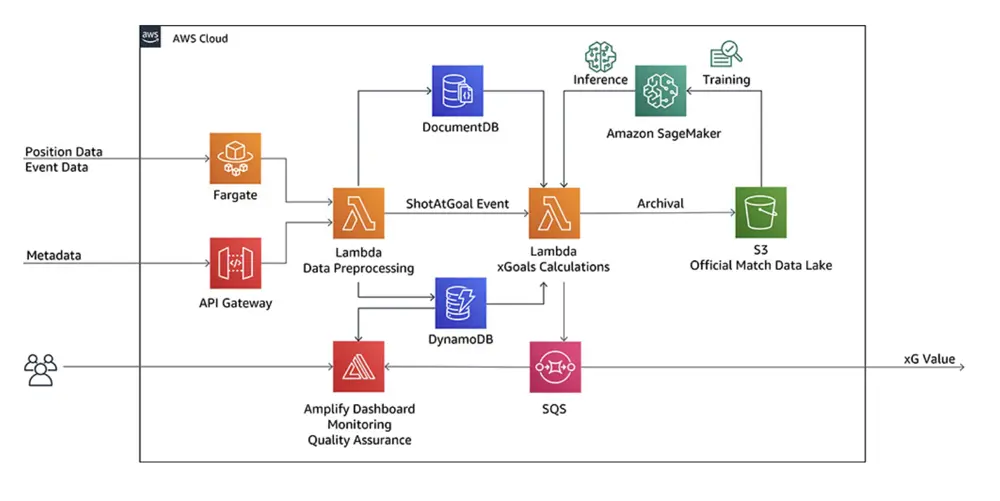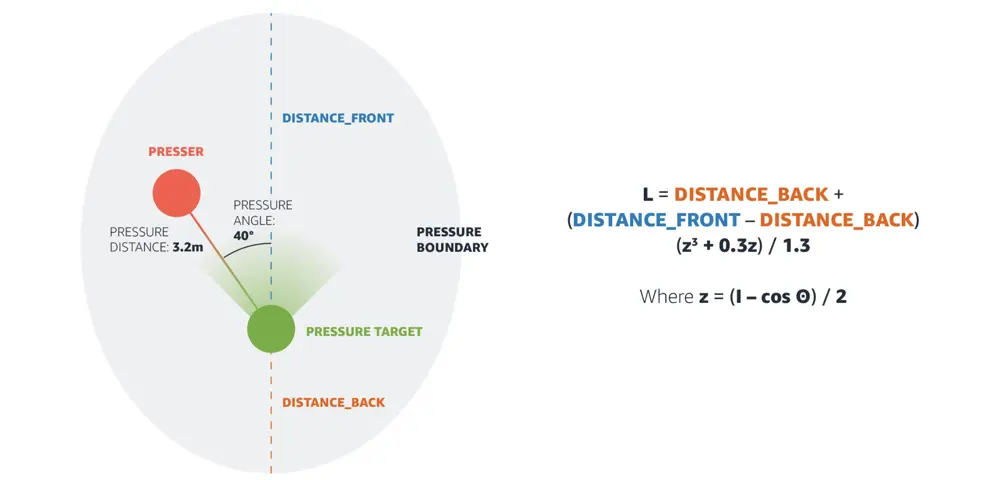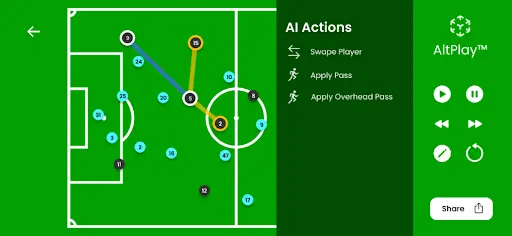At this year's MonstarHacks, our goal was to elevate the sports experience to the next level with cutting-edge AI and machine learning technologies. With that in mind, we designed a unique solution for football fans that will open up new dimensions for watching games. We created interactive simulations for live matches that fans will be able to interact with and peer into more details behind the crucial moments in the games.
Problems We Saw
Football fans often engage in discussions on “what-if” scenarios. They want to explore different scenarios in their heads, talk about them on social media, and even compete with each other. Apart from that, they cherish the memory of their favorite team winning the trophy, feel heartbroken if their team didn’t make it, and ponder what went wrong. These highly emotional experiences can be enhanced in a way that introduces healthy challenges and keeps fans engaged for years to come.
We feel that, as fans, we would like to have a more immersive experience while watching the game and engage in meaningful conversations with our friends. These open up a new social dimension to the sports we enjoy. Being able to explore the “what-if” scenario in a novel way is always enjoyable and worth paying for. We believe that it will be particularly interesting to see these interactions between fans, which will drive engagement to the roof.
Solutions We Found
We are introducing UCL Max, a companion app concept for fans where not only will they be able to watch the game but also explore the “what-if” scenarios. Fans can sign up for a subscription to watch the game, get instant highlights and advanced match facts, interact with AI-powered simulations in AltPlay, and compete in the global leaderboard. Let’s dive into more details to see how this works.
AltPlay
We use cutting-edge machine learning models to predict when a crucial event happens within a live game. As soon as we get that game footage from the cameras, we can determine the relative positions of the players and various metrics from those moments. All of these data are fed into a pre-trained machine learning model, which can be used to predict alternative behaviors of any player in any moment and position.
We have identified the following parameters to train our models:
- Timestamp: represents a single frame of the video.
- Object Type: distinguishes between players and the ball.
- Object ID: unique identifier for each player.
- X-Coordinate, Y-Coordinate: player or ball position on the field relative to the field.
- Speed: the instantaneous speed of the object.
- Heading: direction of movement in degrees.
- Ball Possession: Indicates the player ID with the ball (if any).
- Pass Origin: The player ID of the passer.
- Pass Target: The player ID of the intended receiver.
- Pass Type: Basic classification of the pass.
- Action: Placeholder for basic actions like shots, tackles, etc.
- Action Type: A new column to categorize the actions more specifically: Shot, Tackle, Dribble, Foul
- Shot Type: Ground, volley, header, chip, free kick, etc.
- Shot Direction: Angle relative to the goal or general direction (left, right, center)
- Shot Outcome: Goal, saved, missed, blocked
- Tackle Location: General pitch area (right side, midfield, penalty area, etc.)
- Tackle Outcome: Successful (won possession), unsuccessful, foul
We use AWS Lambda, Fargate, and DynamoDB to process the live match events as well as the previous match events. Data aggregations from these services are sent into the Amazon Sagemaker pipeline to generate inferences and train our existing models. We use AWS Lambda to pre-process the video data and perform calculations on the inferred data. AWS Rekognition is used to determine various events in the game, such as passes, tackles, goals, etc.
Here’s a diagram of the AWS stack:

Using this data, we can predict with confidence when a player makes a successful pass or releases the ball when under pressure. So we incorporate all of this information into a simulation that can be played with each turn based on the actual game. Here’s a formula to determine the pressed player:

How It Works
Users of the UCL Max app can watch the live broadcast of the games and access the moments of the match that can be simulated. When they initiate a simulation, they are presented with a layout of the initial conditions of that moment. The real match path is already highlighted, and the users have the option to play an alternate game. Tapping on the player's position will reveal a possible path that the player can take, and based on the target player’s statistics, we simulate what’s going to happen.

After every turn, the positions of the players will be updated based on the ML inference, and the user will be able to run the next step of the simulation. Once completed, the user will be able to finalize their simulation and play it back. Based on events, for example, a goal scored, if the user can simulate a goal event on an alternate path, then they will be awarded points. This simulation can be shared on social media outlets.
The more points an individual collects, the higher up they go on the leaderboard. We can decide the winner of the leaderboard after a season and offer prizes in collaboration with the sponsors.
Technologies We Used
Here’s a list of the technologies we used to create our simulation pipeline:
- AWS Lambda - Data preprocessing, mathematical calculations for events such as player pressure, goal probability, sprint speed, duration, etc.
- AWS Fargate - Serverless cluster computing.
- AWS API Gateway - Provide access points to ingest data and inference output.
- AWS DocumentDB - High-performance JSON database to store parameter data.
- AWS DynamoDB - Database to store various data
- AWS S3 - Model archival, JSON data archival, caching.
- Amazon SageMaker - AI and ML pipeline.
- AWS Rekognition - Computer vision technologies, video analysis, and image recognition.
- AWS Amplify - Web and mobile app solution, access to other AWS services and streaming.
- AWS SQS - Messaging service between other AWS services.
Why It’s Unique
Our AI-powered AltPlay simulation explores the alternate reality fans often crave. Also, our solution uniquely enhances the user experience and long-term engagement with sports. We believe this novel technology, social aspects, and user retention make our solution innovative.
The main target of our solution is the fans who enjoy sports and are very passionate. Also, the amount and scope of the data we designed to process can be repurposed to enhance team management and player training improvement as well.
We found that the services we are offering to our fans are unique, as we provide a way to watch the game and interact with the highlights in a completely different way. With the emergence of AR/VR platforms, we think that our solution is particularly suited to enhance the experience of watching games and discussing them with friends.
How It Impacts Us
Users will be able to satisfy their curiosity about how they feel about the game and participate in healthy challenges among friends. This will significantly improve the sports experience and add a new dimension to social aspects. Users will get to learn more about their favorite teams and how the players work together. We believe that this will be beneficial for the fans of the sport.
Scalability and Business Opportunities
We use a myriad of AWS services to ensure that our product remains robust and scalable from a technical perspective. Since the football fanbase is one of the largest in the world and spans across continents, we have a potential userbase that is global. Official live broadcasts of football matches are already paid for. By subscribing to UCL Max, users will be able to enjoy the live broadcast from anywhere. We believe that fans will pay the right amount of money for live broadcasts and additional perks and features that open up a new dimension of sports. Leaderboard winners of previous seasons may be rewarded with match tickets for the next season and may receive merchandise promoting the sponsors. This also creates scope for targeted advertising for users. A monthly subscription or one-time season pass can be possible payment strategies.
Our platform and ideas are not limited to football. We can implement similar strategies to other sports such as American Football, basketball, etc. Those leagues have strong fanbases; if they are persuaded to realize the value of our simulations, we could even host betting tournaments where it’s legal. The possibilities are endless.
Challenges We Faced
Our primary challenge was to figure out how we could satisfy the questions of what-ifs for our fans and, in turn, make that competitive. Also, we needed something economically viable. When deciding on how our simulation will work, we found that if we allow the user to simulate a whole match, this is going to be a completely different thing, like a video game. Then we thought instead of simulating the whole game, we would just play the highlights and let them simulate the specific scenarios. It felt like the right direction since we don’t talk about all the moments in a game but only some interesting moments. The next step was to determine what our simulation would look like inside the app. After a lot of brainstorming sessions, we found our inspiration and designed it.
Final Words
MonstarHacks 2024 presented some real challenges this year. We were amazed to learn about the progress in sports that AWS had unlocked. We were so influenced by the BundesLiga Match Facts that we designed our solution based on those ideas, and AWS provided the perfect tools to aid in our solution. Overall, it was really fun and engaging, and we learned a lot from our experience and team efforts. We are looking forward to the next MonstarHacks. Until then, best wishes to all.
Article Photo by Image by master1305 on Freepik
Author

Rokon Uddin
Senior Mobile Engineer Ⅱ




